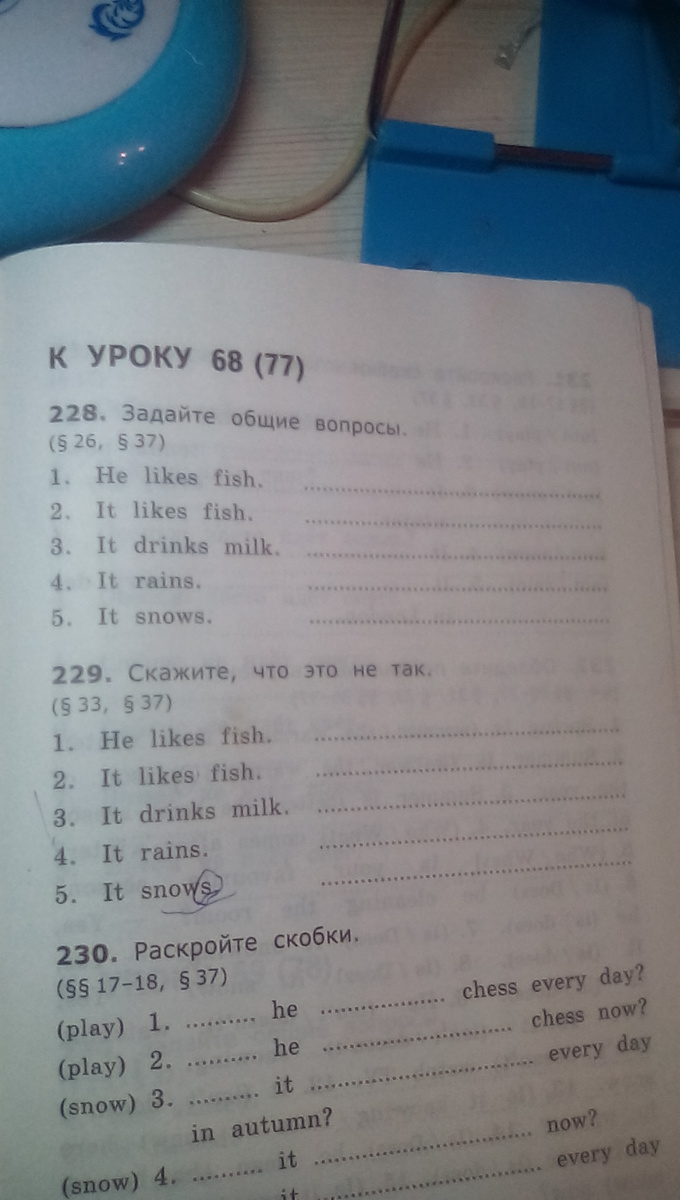Предмет: Английский язык,
автор: Аноним
номер 228!!!!!!!!!!!!!!!!
Приложения:

Ответы
Автор ответа:
0
1. Does he like fish?
2. Does it like fish?
3. Does it drink milk?
4. Does it rain?
5. Does it snow?
Удачи❣
Похожие вопросы
Предмет: Право,
автор: mariaharcenko341
Предмет: Алгебра,
автор: arsentimosenko39
Предмет: Биология,
автор: rastishka65
Предмет: Английский язык,
автор: bernadskayanastya
Предмет: Алгебра,
автор: cosmosssosss